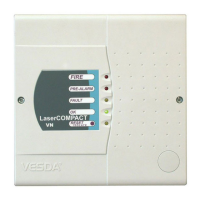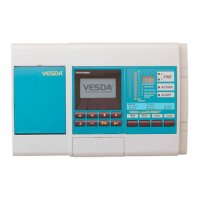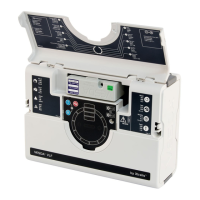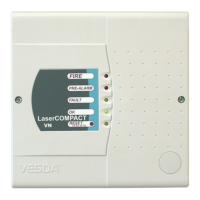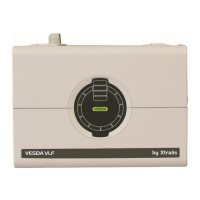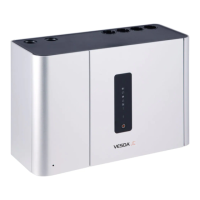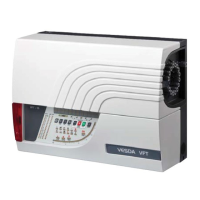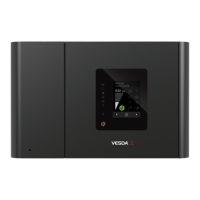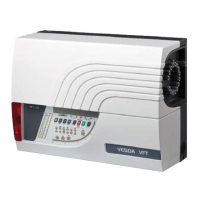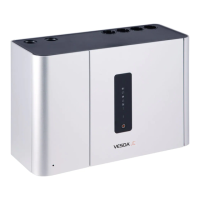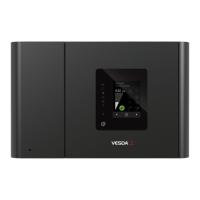Why does my Xtralis VESDA VLI show an Airflow fault?
- MMs. Amy ChaneyAug 2, 2025
The Xtralis Smoke Alarm indicates an Airflow fault when the air flow through the inlet pipe is either higher or lower than acceptable levels.
Why does my Xtralis VESDA VLI show an Airflow fault?
The Xtralis Smoke Alarm indicates an Airflow fault when the air flow through the inlet pipe is either higher or lower than acceptable levels.
What does it mean when my Xtralis VESDA VLI displays a Network fault?
A Network fault on the Xtralis Smoke Alarm indicates a communications fault on VESDAnet.
What does an Urgent fault mean on my Xtralis VESDA VLI?
An Urgent fault on the Xtralis Smoke Alarm indicates a serious issue that requires immediate attention.
What does a System fault mean on my Xtralis Smoke Alarm?
A System fault on the Xtralis Smoke Alarm means there is a fault affecting the network.
Lists key features of the VESDA VLI detector, covering area coverage, filters, and connectivity.
Explains the internal airflow and detection process within the VLI detector.
Provides detailed technical specifications for the VLI detector, including electrical, environmental, and performance data.
Describes the AutoLearn Smoke process for setting alarm thresholds.
Details the procedure for conducting a smoke test for commissioning.
Procedure for replacing the Intelligent Filter in the VLI detector.
Guidance on troubleshooting faults using Xtralis VSC software.
Steps for troubleshooting faults using the LCD Programmer.
Lists key features of the VESDA VLI detector, covering area coverage, filters, and connectivity.
Explains the internal airflow and detection process within the VLI detector.
Provides detailed technical specifications for the VLI detector, including electrical, environmental, and performance data.
Describes the AutoLearn Smoke process for setting alarm thresholds.
Details the procedure for conducting a smoke test for commissioning.
Procedure for replacing the Intelligent Filter in the VLI detector.
Guidance on troubleshooting faults using Xtralis VSC software.
Steps for troubleshooting faults using the LCD Programmer.
| Category | Smoke Alarm |
|---|---|
| Manufacturer | Xtralis |
| Type | VESDA VLI |
| Number of Sampling Pipes | 4 |
| Number of Sampling Points | Up to 40 |
| Maximum Pipe Length | 100 m |
| Power Supply | 24 VDC |
| Detection Method | Laser-based |
| Communication Protocol | VESDAnet |
| Humidity Range | 0% to 95% non-condensing |
| Certifications | EN 54-20 |
| Power Consumption | 12 W (typical) |
